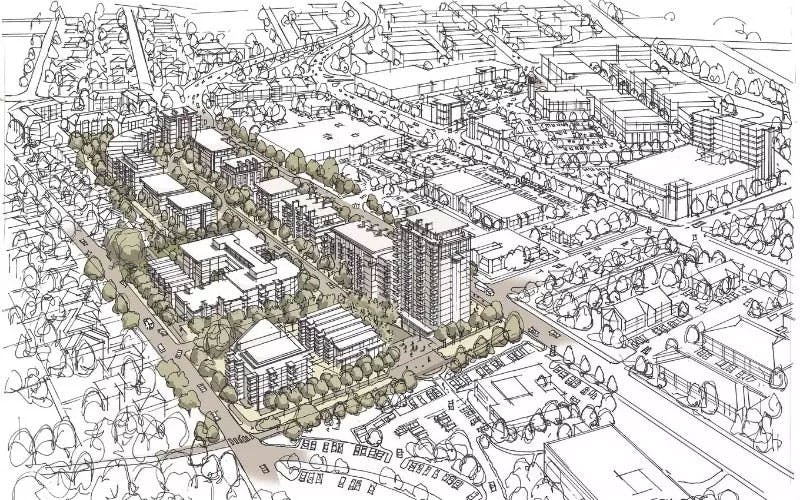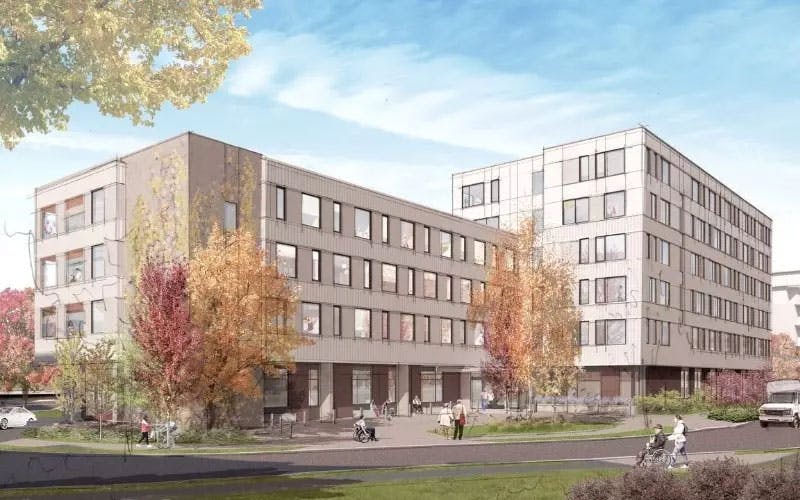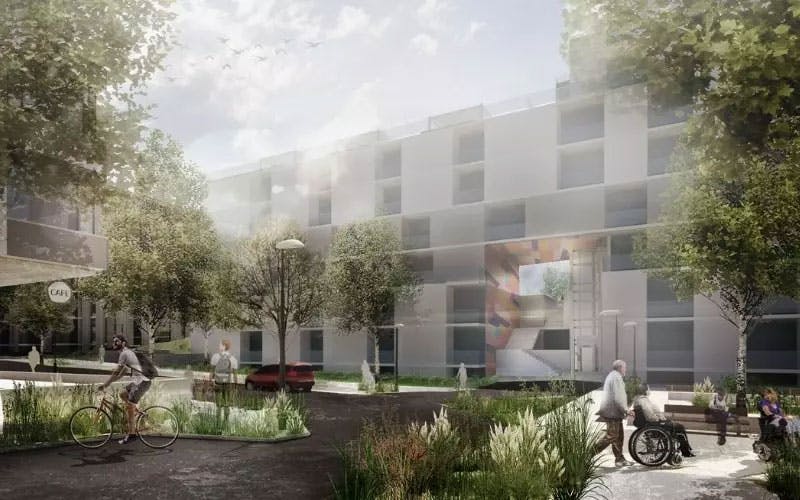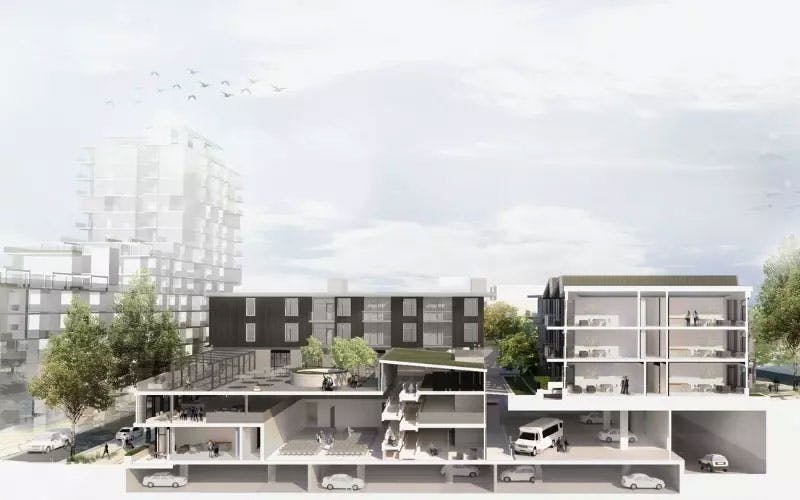Saanich - Nigel Valley

About the Project
Led by BC Housing, Nigel Valley’s five on-site housing and care operators have partnered to comprehensively consider the renewal and redevelopment of their lands within Saanich’s uptown core, directly adjacent to District Hall.
The Nigel Valley project is a unique nine-acre parcel of lands. They are owned and operated by a collection of five housing and care operators that serve the needs of a variety of populations, including seniors, families, adults recovering from a mental illness and adults with developmental and physical disabilities.
The partners recognized that by working together they could realize a better and more cohesive neighbourhood plan, with less of an impact on existing tenants and clients, than each operator proceeding with redevelopment on their own.
The Province, through BC Housing, is leading the redevelopment in partnership with the federal government, Broadmead Care, Garth Homer Society, Garth Homer Foundation, Greater Victoria Housing Society and Island Community Mental Health Association.
The Nigel Valley redevelopment will be completed in three phases over the next decade. The phased approach will allow current residents to remain in their homes until construction of their new homes is complete.
The redevelopment will provide hundreds of new homes for individuals, families, seniors, veterans, people living with disabilities and people with mental-health challenges. This includes:
- approximately 440 affordable rental homes;
- approximately 255 units of market housing;
- 41 long-term care beds;
- 37 homes with supports for seniors and veterans; and
- 25 homes with supports for people with mental-health challenges.
Steering Committee
The Nigel Valley planning process has been led by a steering committee of the on-site operators:
- BC Housing
- Broadmead Care
- Island Community Mental Health
- Garth Homer Society
- Greater Victoria Housing Society
The Nigel Valley area is bounded by Vernon Avenue to the south, Lochside Trail to the west and Darwin Avenue to the north. Many of the Nigel Valley buildings were built in the mid-1970s and require significant investment and repair. Many also don’t maximize their sites’ housing and care potential, and no longer meet current housing and care demands.
By working together, the Nigel Valley steering committee sought a solution that would increase the amount of care and housing on-site and minimize the impact of revitalization on tenants.
Vision
The Nigel Valley steering committee has set out the following vision to guide its planning process:
“A thriving and inclusive community where everyone feels at home and connected."
Fact Sheet
Useful information on this redevelopment can be found in the factsheet.
Partners
The steering committee looks forward to continuing to work with the following partners through the Nigel Valley planning and redevelopment process:
- B.C. Ministry of Transportation and Infrastructure
- District of Saanich
- Island Health
- Gorge Tillicum Community Association
- Quadra Cedar Hill Community Association
- Mount View Colquitz Community Association
Neighbourhood Plan
After input from the steering committee, 11 planning principles were identified and refined via a collaborative review with neighbourhood stakeholders, residents, and community associations. The following principles convey the aspirations of the Nigel Valley redevelopment to achieve a renewed neighbourhood.
Nigel Valley Neighbourhood Plan
- A compact, walkable neighbourhood. Support urban growth within the Saanich core through the design and development of a compact neighbourhood, where residents can choose to live, work, shop and play nearby and easily access daily needs and activities.
- Integrate & connect to surrounding community. Develop new connections to link streets and trails to maximize convenient accessibility for all ages and abilities to and through the neighbourhood.
- A variety of residential types and tenures. Create a greater diversity of housing forms for people of different abilities, ages, life stages and income levels, to support the development of a more diverse neighbourhood.
- Neighbourhood care & support services. Celebrate and strengthen the community care and support services that enrich the lives of people with special needs.
- A multi-modal transportation network. Calm motor vehicle traffic, while creating a circulation network that provides transportation choices and fosters greater walking, cycling and transit use.
- Natural areas & community gathering spaces. Create public places for people to meet, gather and play and support access to neighbourhood parks and natural areas.
- An inclusive & renewed neighbourhood. Plan to accommodate existing and future residents, visitors and employees by considering the phasing and sequencing needs of all stakeholders.
- Green buildings & infrastructure. Utilize smarter more sustainable infrastructure and follow green building principles and standards.
- Equitable land allocation. Achieve an equitable distribution of land to reflect and maintain the asset strength of each property owner group or organization.
- Encourage & facilitate community social enterprise. Support the potential for community social enterprise through integration of commercial land uses within the neighbourhood.
- Flexible development phasing strategy. Create a neighbourhood plan that provides flexibility in development phasing and staging to support individual site redevelopment.
Questions and Comments
You are welcome to submit questions or comments at any time by emailing communityrelations@bchousing.org.




